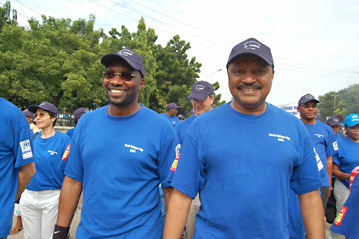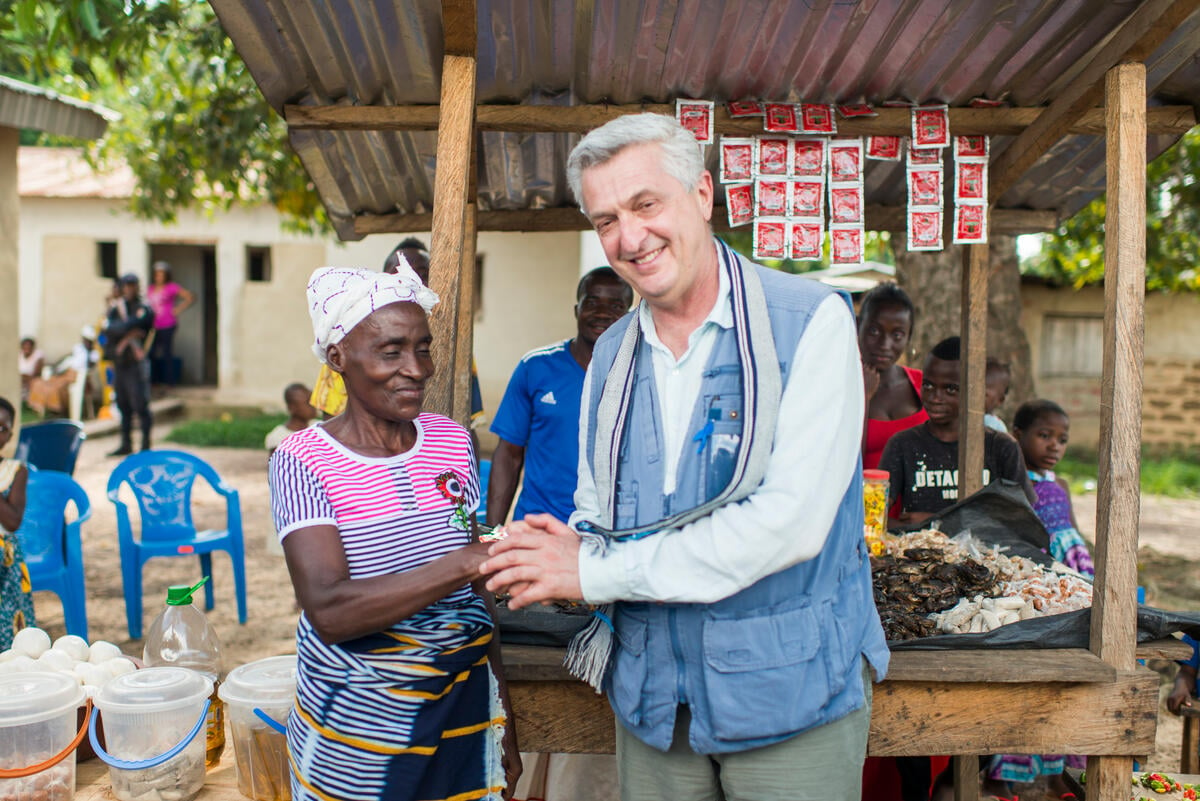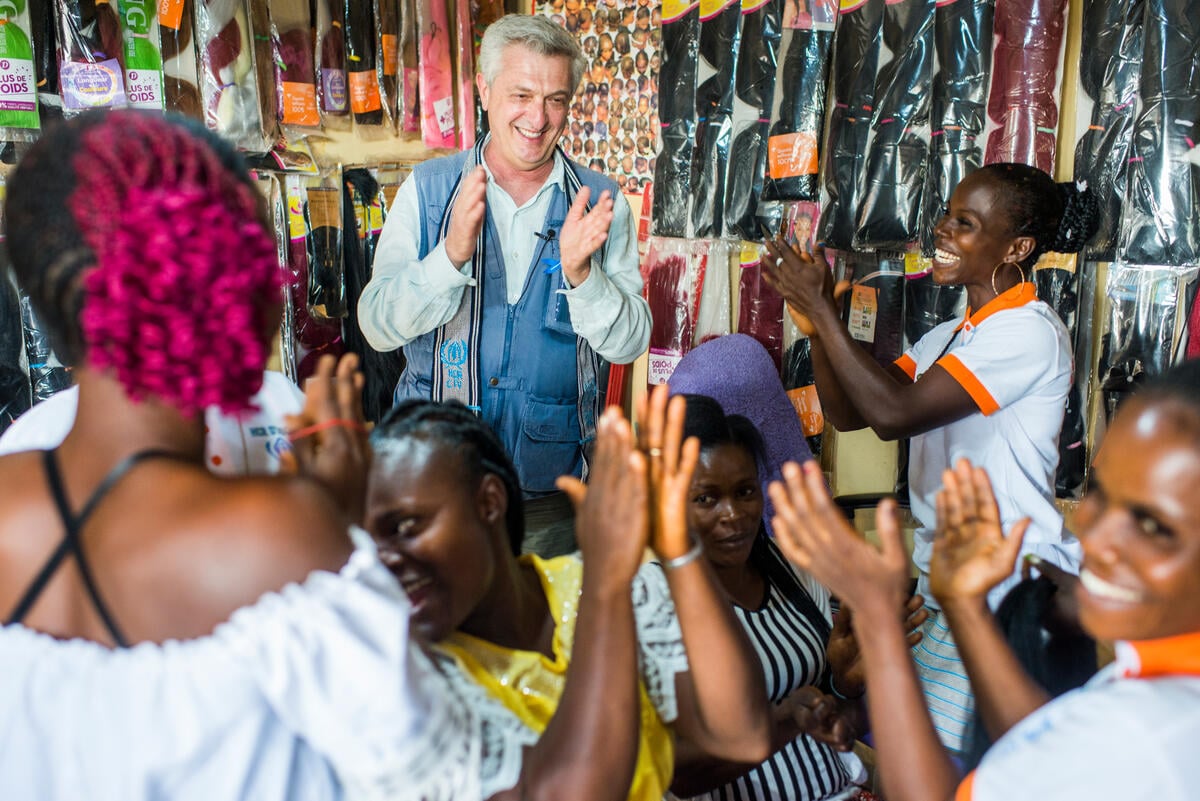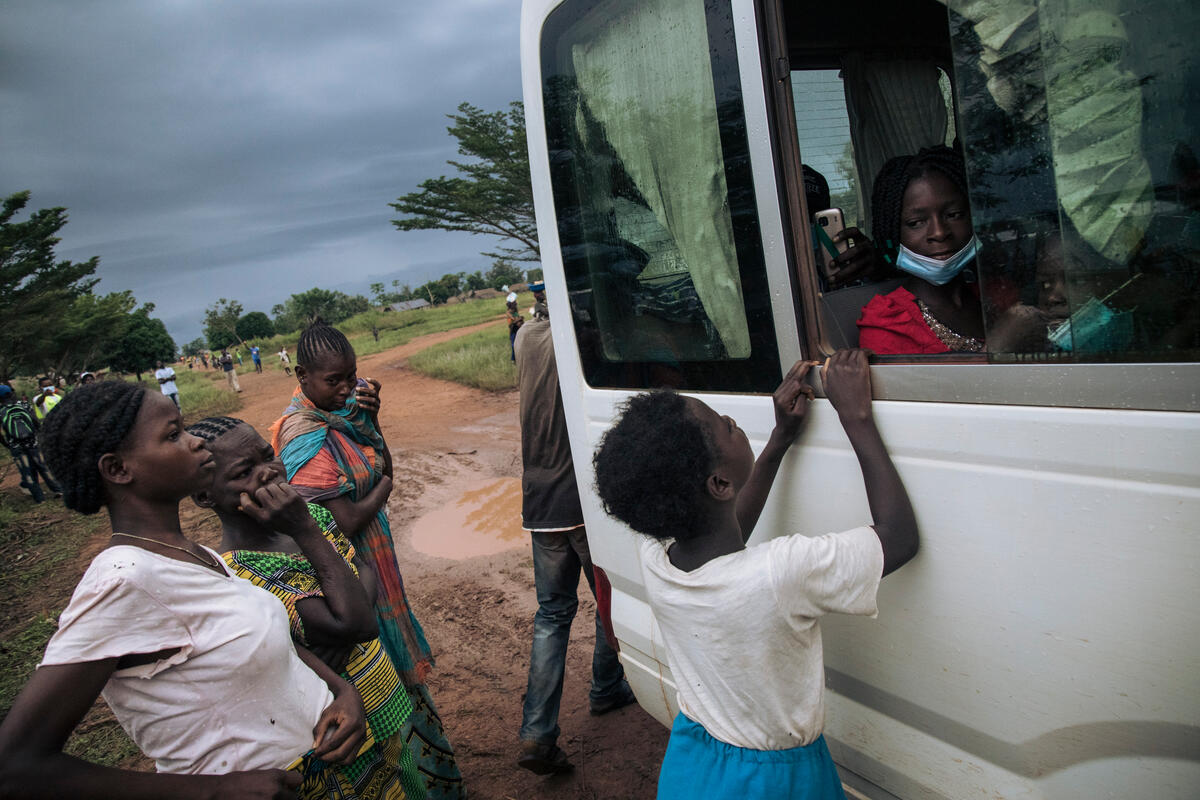Q&A: UNHCR in pursuit of durable solutions for refugees in Tanzania
Q&A: UNHCR in pursuit of durable solutions for refugees in Tanzania

DAR ES SALAAM, Tanzania, October 10 (UNHCR) - UNHCR Representative in Tanzania Yacoub El Hillo has helped uprooted people around the world during his long career with the refugee agency. The Sudanese national has been in Geneva to attend the annual meeting of UNHCR's governing Executive Committee (ExCom) and explain how his office, working closely with the Tanzanian government, has been working to find durable solutions, including repatriation, resettlement and local integration for tens of thousands of refugees, mostly from Burundi and the Democratic Republic of the Congo (DRC). This year has been a particularly fruitful and busy one, with UNHCR finding dignified and durable solutions for more than 94,000 refugees to date. He talked recently in Dar Es Salaam with UNHCR External Relations Officer Eveline Wolfcarius about the work of his office. Excerpts from the interview:
What is the current refugee situation in Tanzania?
For decades, Tanzania has hosted one of the world's largest refugee populations. The number of people in refugee camps topped 700,000 as recently as the year 2000. Today, thanks to active [UNHCR] voluntary repatriation programmes, that population has fallen dramatically. As a result, the Tanzanian government and UNHCR are gradually closing and consolidating the camps, while protecting and assisting the remaining 134,000 refugees.
At the start of 2007, UNHCR was running 11 refugee camps in north-western Tanzania. Today, just four are left - all in the Kigoma region. In June this year, the Lukole camp for Burundian refugees was closed; a move which made the Kagera region ... free of refugee camps for the first time in over 15 years. In addition, more than 200,000 refugees who fled from Burundi in 1972 live in three self-sufficient so-called "old settlements," and there is also one settlement where [some 1,500] Somali refugees live.
How has UNHCR's work in Tanzania changed in recent years?
UNHCR Tanzania has made an important transition from a relatively stable care-and-maintenance operation to a dynamic operation which aims to find a dignified solution for each refugee. To attain that goal, all three durable solutions are used.
For the great majority of the camp-based refugees, the solution lies in voluntary repatriation. More than 353,000 Burundian and 60,000 Congolese camp refugees have been assisted to return home [by UNHCR] from the camps since 2002 and 2005 respectively.
As Tanzania's President [Jakaya Mrisho] Kikwete stated at last year's annual meeting of the United Nations General Assembly: "The return of refugees to their country of origin is a sovereign right which should not be denied. It is the ultimate testimony and guarantee of the peace so attained." But peace alone is not a sufficient incentive to return. Several UNHCR initiatives have helped returnees restart their lives back home, such as food assistance for six months [compared to the previous three months] and a cash grant of US$45 for refugees returning to Burundi.
The UNHCR office also uses resettlement as a strategic solution for a small number of camp-based refugees. The resettlement of 1972 Burundian refugees will soon come to a close with more than 7,000 refugees having departed for the United States since May 2007.
In March this year, UNHCR launched an unprecedented durable solutions programme for the remaining 218,000 Burundians who fled their country in 1972 and have since lived in three self-sufficient settlements in western Tanzania. Through voluntary repatriation and local integration via naturalization, UNHCR and the international community are supporting the Tanzanian government to end this refugee situation, one of the most protracted in the world.
Furthermore, a small group of Somali Bantus in Chogo settlement are being granted Tanzanian citizenship and allowed to settle permanently in the Tanga region. In conclusion, more than 94,000 refugees have found durable solutions so far this year. This achievement would not have been possible without the excellent cooperation between the Tanzanian authorities and UNHCR.
How closely does UNHCR cooperate with the Tanzanian government?
UNHCR Tanzania enjoys a very close collaboration with the government, especially with Home Affairs Minister Lawrence Masha and his staff. This cooperation has been crucial for the progress achieved in pursuit of all three durable solutions. It has been particularly important in addressing the situation of the 1972 Burundian refugees in Rukwa and Tabora regions.
Minister Masha, addressing the ExCom meeting earlier this week, thanked the High Commissioner [for Refugees António Guterres] and the international community for the support they have shown in attaining durable solutions.
Tell us a bit more about the 1972 Burundian refugees caseload
In a historic move in mid-2007, Tanzania declared its readiness to work with UNHCR and the international community to realize dignified solutions to the group of Burundian refugees from 1972 hosted in the three old settlements. A two-year strategy was designed to assist the return of more than 46,000 of them and locally integrate a further 172,000, who had expressed their desire to remain in Tanzania.
In a noble act of humanity, the government offered these refugees the right to apply for citizenship in accordance with Tanzania's laws and procedures. The voluntary repatriation and naturalization processes are in full swing, with some 20,000 refugees now back home and 136,000 having applied for Tanzanian citizenship since the exercise was launched in March 2008. A thorough screening process by the Tanzanian authorities is under way to ensure conformity with the established criteria of naturalization. The programme relies heavily on support from donors.
What is the way forward for UNHCR in Tanzania?
For the old settlements comprehensive solutions strategy, the attention is now beginning to shift to the final stage: helping those who will be naturalized to finally integrate in Tanzania. Work on this local integration pillar has begun, but greater support will soon be needed as the people begin their move out of the old settlements and into their new lives. Together, Tanzania, UNHCR and the international community can ensure that, with quick impact initiatives, this third pillar of local integration is as successful as the repatriation and naturalization pillars.
In north-western Tanzania, with the dramatic reduction of the refugee population, UNHCR will continue to work closely with the [former] refugee-hosting communities to mitigate the negative consequences that could result from the withdrawal of humanitarian support. In 2008, our office played a catalytic role in preparing the UN's "Delivering as One" joint programme - Managing Transition from Humanitarian Assistance to Sustainable Development in North-Western Tanzania. The US$10.8 million programme, benefiting local communities, will focus on health and education.
Finally, while the refugee operation is scaling down, mixed migration flows into and through the country are increasing. This year, the office has started discussions with the Ministry of Home Affairs and other stakeholders to address issues related to managing such population flows through the Ministerial Task Force on Irregular Migration.








